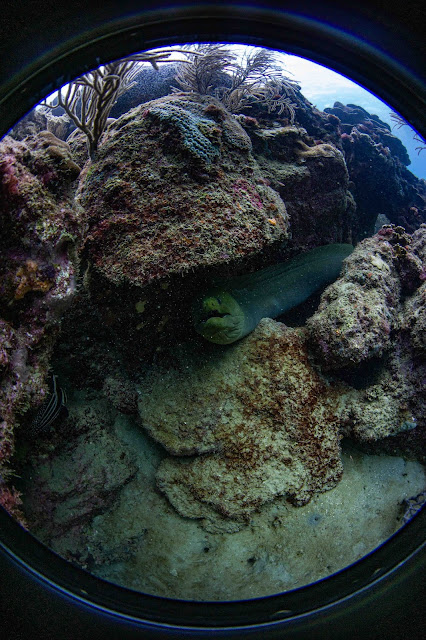Sun energy in Tobago, part 2
 |
| The sun is on for everyone, in Tobago. A small village, like Charlotteville, could take advantage of solar energy. Photo Pat Ganase |
― Joseph E. Stiglitz, 2001 Nobel Prize for Economics
Climate change is real. The challenge for all the nations of the world is to keep the rise in average global temperatures under 2 degrees Celsius (1.5 degrees is the acceptable limit). The means by which we achieve the global target includes a menu of strategies and measures, including reduction in plastic waste and its removal from the oceans, reducing and removing atmospheric carbon, limiting fossil fuel use and finding sustainable renewable sources of energy. Scientists acknowledge that no one measure is going to be the magic solution to the warming world. We must all do what we can, and do it urgently. This week, Ruben Smith of SM Solar, continues his discussion about how the villages of tiny Tobago could set solar power in motion, by asserting their characteristic solidarity and co-operative approaches. This is the second part of the feature, first published on May 25 in the Tobago Newsday.
Scientists around the world agree that renewable energy sources can result in a cleaner world. “The International Solar Energy Society (ISES) envisions a world with 100% renewable energy for everyone used wisely and efficiently.” ISES has been in existence since 1954. Solar Energy International (SEI) was established in 1991 to educate and empower technicians in the development and installation of renewable energy sources. The University of Trinidad and Tobago with the support of the SEI and the ISES regional contact is currently developing courses for the general public in photovoltaic installation with the participation of the several government agencies. It remains for the energy (fossil fuel) sector and associations in our country to expand the definitions of their businesses.
This week, we look at the practical steps to solar installations in a cohesive residential development, or co-operative (a mall even) in Tobago.
Let us look at how a small Tobago village, say a Castara or a Charlotteville or even a Cove Estate, would migrate to using solar power. One of the keys to optimum benefit is the co-operative. And villages that have a strong and effective community collective are the most likely to succeed. Some of the new residential developments, industrial estates and mall complexes are also good prospects for solar power.
An existing cooperative such as the Castara Tourism Development Association or Charlotteville Estates would need to ensure that they have a membership structure that allows them to negotiate and secure financial arrangements on behalf of members; in this case, with TTEC and financial institutions such as banks, mortgage or lending agencies.
The relationship with TTEC is simple, based on pre-existing conditions. We are fortunate indeed in the distribution system that has been installed over most of the country; and which will facilitate the next step towards the use of renewable energy. The co-operative would need to have their designs approved by TTEC. Although most TTEC meters are bi-directional, T&T does not have a net metering system which means that power from the household or building will either stop the process of metering or turn the meter in the opposite direction. There are conditions that TTEC would require: among them, breakers or switches that, if needed, would separate the grid from the smaller system (island it off).
The next step might be financing of the system from traditional sources such as banks, mortgage companies, credit unions; or non-traditional sources, say a green fund or small grant provider. At this time, the financial industry needs to be educated and open to the possibility of new business. A solar system is a fixed asset. It may be considered a home improvement project, but it is in effect a long-term investment. Most solar panels have 25-year warranties; so you are looking at plans that may be structured along the lines of a mortgage. It would be interesting to see which local bank is first to take up the challenge to finance solar systems.
Improvements in technology for solar panels and the “balance of system” (kiosks, circuitry and storage batteries) have resulted in sturdier smaller storage systems; automated to respond to fluctuations or intermittencies in sunlight. They can be monitored and controlled remotely and wirelessly, from your phone or computer. When such a system is installed, members of the community are educated to maintain the parts that are at their homes. All members achieve a level of knowledge and skill.
Servicing the loan, maintenance and operation of a solar system are jobs that belong within the community/ co-operative. The system can be expanded to new houses or buildings for new members of the village. The co-op can sell electricity and find ways to ensure the sustainability and expandability of the system. Of course, individual householders can choose to install solar systems for their own use. However, the advantages of a co-operative approach are many and self-evident: collecting the sunlight, sharing the risk and responsibility and lower upfront cost to the users.
Advances in solar systems are happening so quickly now that it is estimated that by 2018, the tariff of electricity generated from this would be close to TTEC’s current domestic rate. Saule Technology in Poland is currently working on a technology that offers solar foil that can be applied like contact film, ultra-thin, flexible, efficient, and will adhere to almost any surface. The advantages are obvious for old or existing structures.
The Eco-Industrial Development Company of Tobago (E-IDCOT) at Cove Estate could easily aim to generate 50% of its energy needs from the sun over the next two years, thereby reducing the need and cost for electricity from natural gas.
The sun is on! It is on for everyone, and for a long time.
 |
| Ruben Smith: renewable energy to tackle climate change and reduce dependence on fossil fuels. |
RUBEN SMITH
is a principal of SM Solar, a business established to specify, install and manage solar systems in Trinidad and Tobago. SM Solar is the regional contact for the International Solar Energy Society (ISES). It is the Coordinating Management Entity (CME) for the Clean Development Mechanisms (CDM) Program of Activities for the Caribbean and Central America. Mr. Smith’s areas of research are in the development of Financial Platforms and Stochastic Models to improve levels of Photovoltaic (PV) Availability, Grid Penetration and Integration.
SM Solar is currently conducting the assessment and installation of a solar array for the National Trust of Trinidad and Tobago at Nelson Island.
Mr. Smith and his team are credited with the development of many renewable energy models, including the Grid Tied Government Assisted Model, Paradigm Shift Moving from Current forms of Electricity Generation to Distributed Generation using a Utility Assisted Structure.
Mr. Smith holds a Bachelor’s in Industrial Engineering from the University of Miami (1985), specializing in Management Science and Modeling. His graduate studies include an M.Sc. in Finance, Project Management and a Post MBA.
FURTHER INFORMATION
https://www.ises.org/who-we-are
http://sauletech.com/
https://www.project-syndicate.org/commentary/paris-climate-agreement-insufficient-by-ajay-mathur-and-adair-turner-2016-05


